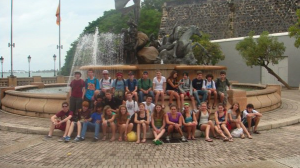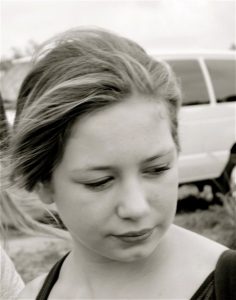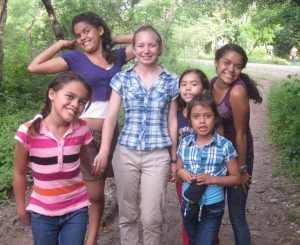In 2010 I traveled to Puerto Rico on my school’s 8th grade global service trip. In preparation we held car washes and babysitting nights to raise financial aid for the students whose families were unable to pay the $2,000 cost of the trip. I remember being proud that although my parents were able to pay for me, they insisted I cover 10% of the cost to have skin in the game.
In Puerto Rico we spent the first days camping on a covered platform in the jungle. During the day we helped build houses in a nearby community. As thirteen and fourteen year olds we obviously had no construction skills. Our job was mostly moving concrete blocks and spreading cement under close supervision. We “worked” short days with an excess of teenage labor.
Puerto Ricans from the community did serve us lunch one day. It was the only interaction I remember with the people we were supposed to be helping. The few first-language Spanish speakers in our group chatted with them, but I was nervous and had no Spanish skills and ate with my peers.
We then traveled to Vieques where we stayed in a nice hotel with a pool. One day we snorkeled for specimens for a local aquarium and the next painted over graffiti at a local school. Far from connecting with our Puerto Rican peers, several boys catcalled us gringas. Most of us had never experienced such overt attention in the United States and the cultural difference was isolating. I imagine most of the Puerto Rican students were baffled or bemused by their fellow American citizens who had come all the way from California to paint.
The trip had some value. I learned about the controversy over Puerto Rican statehood for the first time and saw, for a brief moment, a form of Latin American poverty. But I stayed snugly in my comfort zone. We hardly interacted with Puerto Ricans and I am under no delusions that we had a positive impact.
What I really remember is flirting with my middle school crush in a bioluminescent bay and getting my first Facebook profile picture. Mostly it was a group of private school gringos on a quasi-educational spring break vacation. It was a classic example of voluntourism.
While global service learning looks great on resumes, private schools are also pressured to facilitate such trips. They compete with each other to attract families with deep pockets by providing the most rich and global educational experience money can buy. The money we fundraised for financial aid and the money our parents paid would have had a much greater impact if donated directly. Of course, that was not the point. The trip was solely about furthering our education.
In 2013 I went to Nicaragua on a very different type of service trip through Amigos de las Américas. Throughout my junior year of high school I attended training meetings every other week with my local chapter where we talked about cultural challenges, health and safety, and even read Ivan Illich’s “To Hell with Good Intentions.” I also raised over $4,000 selling poinsettias and grapefruit provided by Amigos. While a lot of that money went to the cost of the program and Amigos’ national office, my community in Nicaragua did receive $400 to complete a community development project.
In Nicaragua I lived with a host-family in a rural, agrarian community of 200 people for six weeks. My partner—another Amigos volunteer living in my community—and I taught classes to local children about health and safety and helped facilitate building a community kitchen at the school. It was entirely constructed by Nicaraguans, we simply held several meetings to brainstorm ideas with community members and get the project started.
This trip really challenged me. I was immersed in a culture and environment entirely different from where I am from without the safety net of traveling with a large American group, staying in hotels, and speaking English. I formed close relationships with my Nicaraguan host family and we felt comfortable discussing the history of American intervention, Sandinistas, and the death penalty. It was a true cross-cultural experience.
I am not sure how positive an impact our service had. The classes we taught to the local children were more game than knowledge orientated. And besides from providing the $400 for the kitchen and hosting initial community meetings my partner and I were minimally involved in its construction. But that was also the point. Our presence was supposed to be a catalyst for local community organization. Since we were there for only six weeks I do not know if we supported longterm change. I regret not trying harder to encourage local youth leadership. It was certainly a more thoughtful, service-oriented, and transformative experience than my middle school trip to Puerto Rico.
There is still a lot I want (and need) to learn about global service learning and tourism. After my trip I changed my profile picture to one with my Nicaraguan host siblings. While I had formed close relationships with them at the time, I did not even consider what message I was broadcasting to my American friends who did not understand the context.
Amigos is one model of global service learning that focuses on immersion and cross-cultural experiences. While they try to support local leadership, it is still an American based organization importing gringo volunteers to Latin America. (They are in the process of making it a real exchange. My family hosted a student from Paraguay for three weeks the next winter as part of an Amigos educational program that sends youth from Paraguay and Uruguay to the United Sates). I’m excited to work with Bridges to Community and observe how their model works. I believe global service learning can be more than voluntourism and that cross-cultural exchange is vital as global citizens (that is why I am here). But it is a really complicated endeavor that requires a lot of thought and commitment to do well.



